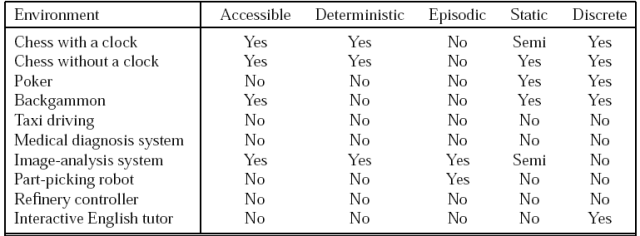Types of Environments
- Deterministic and non-deterministic
An environment is deterministic if the next state of the environment is solely determined by the current state of the environment and the actions selected by the agents. An inaccessible environment might appear to be non-deterministic since the agent has no way of sensing part of the environment and the result of its actions on it. We have to take into consideration the point of view of the agent when determining whether an environment is deterministic or not since the agent might have limited perception capabilities.
- Episodic and non-episodic
In an episodic environment, the agent's experience is divided into episodes which consist of a percept sequence and an action. Since episodes are independent of one another and the agent doesn't need to know the effect of its actions.
- Static and dynamic
An environment is dynamic if it changes while an agent is in the process of responding to a percept sequence. It is static if it does not change while the agent is deciding on an action i.e the agent does not to keep in touch with time. An environment is semidynamic if it does not change with timebut he agent's performace score does.
- Discrete and continuous
If the number of percepts and actions in the environment is limited and distinct then the environment is said to be discrete.eg A chess board.

Table of environments
Sources: (Artificial Intelligence: A Modern Approach by Stuart Russell and Peter Novig), Reference »